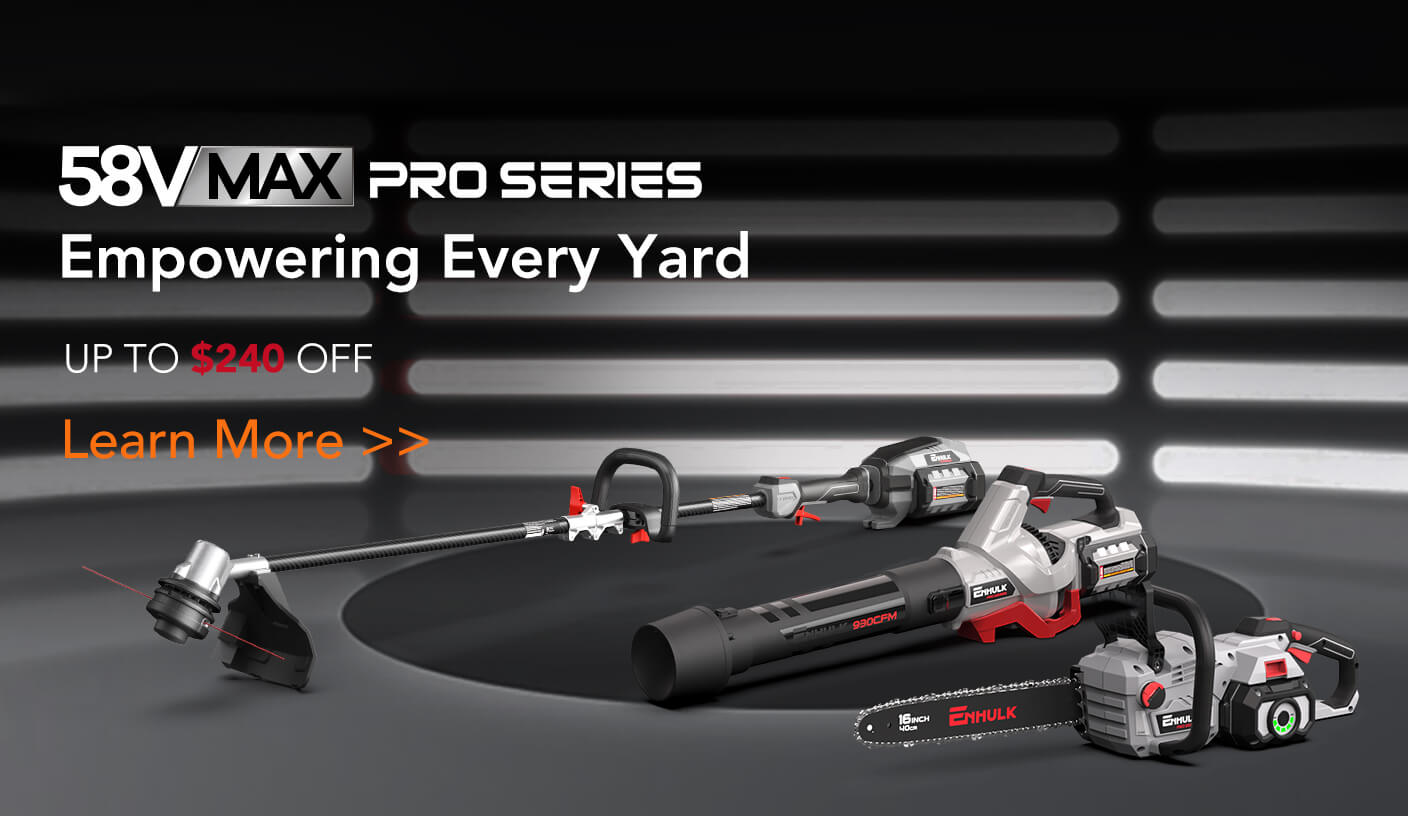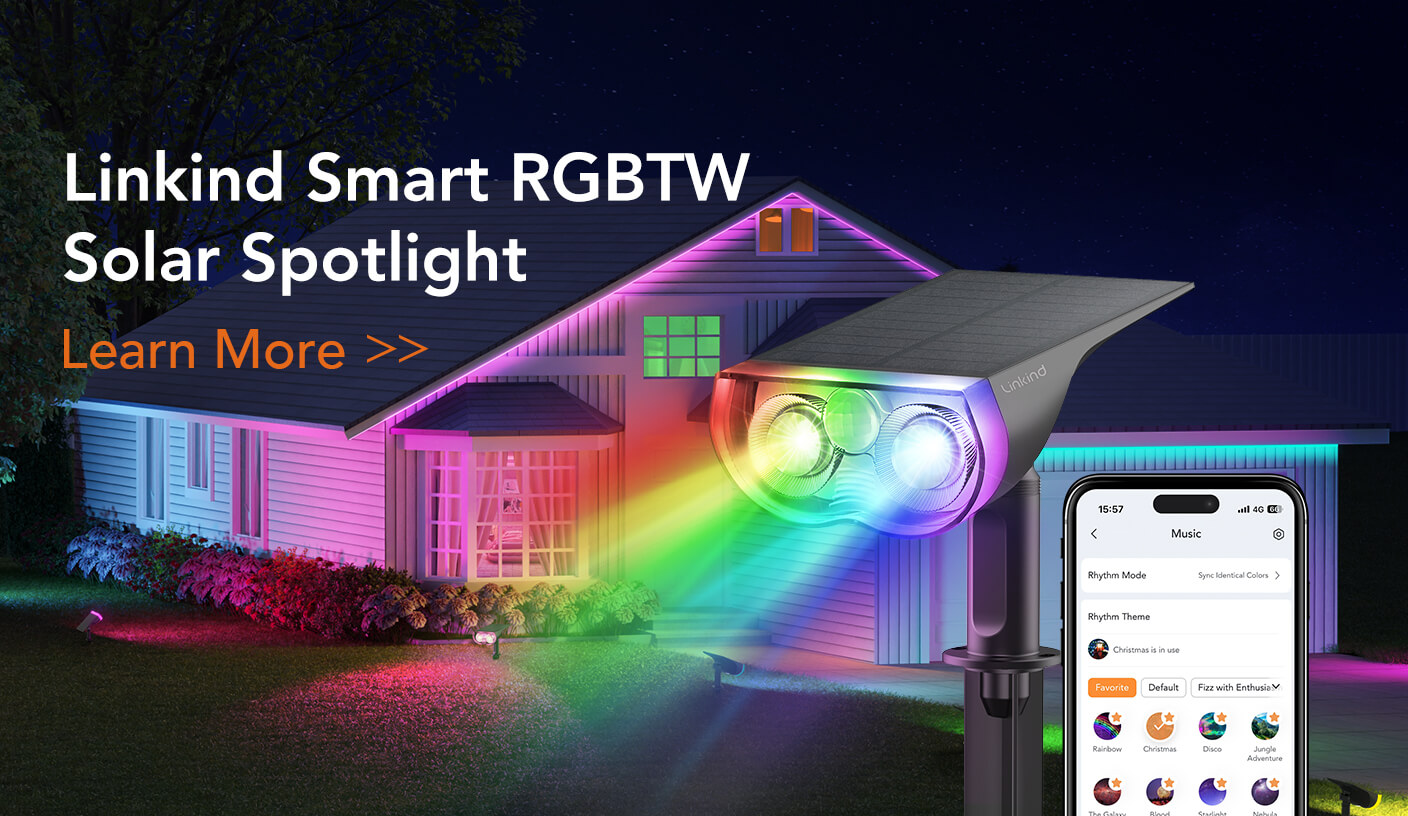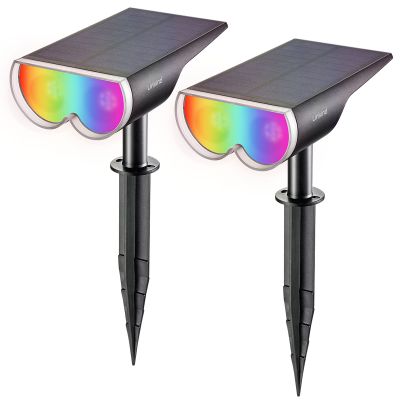Solar garden lights are the showpiece of any beautiful outdoor design. They will transform your garden from average to exceptional in a subtle yet unmistakable way. Outdoor solar garden lights can be decorative and functional, acting as accent lighting and general illumination, or they can be more functionally minimalistic, serving just as general illumination. Solar panels convert sunshine into electricity, which powers solar garden lights during the day. Cheaper and easier to install than their electrically powered counterparts, solar garden lights also help you save money on both electricity and batteries. In addition, with the proper lighting, you may create a functional and aesthetically pleasing landscape.
Part.1 How Do Solar Garden Lights Work in Your Garden?
The photovoltaic effect is responsible for the operation of solar powered garden lights. The photovoltaic, often known as the solar cell, is the most vital component of a solar garden light. It is the solar cell's job to transform sunlight into DC electricity. This solar cell is the dark panel at the very top. In a solar cell, crystalline silicon and other substances are stacked in multiple layers, with each layer alternating between containing positively charged spaces and negatively charged electrons. When photons from the sun hit a solar cell, they excite the negatively charged electrons, propelling them into the positively charged wells. The positively charged areas of the solar cell channel the electron stream as a direct current of electricity through the wires to the battery. The solar panels continue to convert the sun's energy into usable electricity all day long, keeping the battery charged.
As night falls, the solar cell's ability to convert sunlight into energy decreases until it eventually stops working. The light, which typically consists of multiple light-emitting diodes, is activated by a photoreceptor that senses when it is dark (LEDs)—the battery charges during the day and powers the light at night. Everything goes back to square one every day. Energy from the sun is used to recharge the battery during the day. When the sun comes up, the photoreceptor turns off the light since it no longer needs power from the battery.
Part.2 Why You Need Solar Garden Lights?
Solar garden lights are ideal for showcasing a company's green drive or gaining LEED points on a new project installation. They also provide security and illumination in locations where grid electricity is unavailable or too expensive. Here are some more reasons why solar garden lights are ideal for you:
Cost Effective:- Considering the similarity in the prices of solar garden lights and traditional ones, they are an excellent and economical alternative.
Energy Saving: Solar garden lights offer a sustainable alternative to standard illumination without needing to connect to the electrical grid. This means they can continue functioning even when the power goes out, as they are not dependent on the grid. They have also implemented a cutting-edge method of generating renewable energy. As its costs continue to drop, solar power is rapidly becoming one of the most cost-effective renewable energy sources currently accessible.
Low Maintenance Cost:- The systems require little to no upkeep, especially now that LED light fixtures are widely used due to their long lifespan of up to 20 years. In contrast to other lighting options available today, LEDs last the longest.
Part.3 Installation of Solar Garden Lights
Low-voltage and solar-powered garden lights are available in various stylish and straightforward designs. Here are the procedures for installing them::
Step 1: Select Preference
Solar-powered garden lights come in various sizes and styles, so you can choose what works best for your garden.
Step 2: Stake and Set
Each solar light has a post you can drive into the ground and slot onto the foundation stake. Then, add the light component on top.
The most challenging part of the installation is ensuring all the posts are straight, evenly spaced, and driven into the ground at the same depth. Inadequate attention to the positioning will be glaringly apparent once the lights are turned on.
Step 3: Positioning
Solar garden lights work best when placed with sunshine throughout the day. Do not assume that you have found the perfect place just because the lights will be illuminated by the midday sun. For the maximum of 8-10 hours of light at night, solar lights need roughly 8 hours of direct exposure during the day.
If the solar lights cannot be placed in direct sunlight, a remote solar panel can be used to collect solar energy. Place the solar panel in direct sunshine, which will collect energy to power the lights that are not in that area.
Part.4 How to Clean Solar Panels on Garden Lights?
In reality, cleaning the solar panel of a solar garden light is no more complicated than cleaning the solar panel of any other, whether it's a simple decorative solar garden light or one that provides more advanced lighting features. If you have a solar garden light, here are some essential guidelines for maintaining its solar panel:
1. Start by removing any loose dirt from the solar panels by sprinkling a little warm water over the top cover of the solar garden light. This will aid in the removal of any stubborn dirt that has been clinging to the panel for an extended period.
2. Then take the garden lights apart by removing the top cover from the base.
3. Clean the top with a damp towel or kitchen sponge dipped in a solution of mild detergent and water. Avoid adding extra cleaning products to the mixture, including bleach, as you stir.
Carefully slide a toothbrush across the surface to remove tenacious debris, keeping in mind that doing so could potentially damage the solar panel or another component of the garden light. It will also aid in keeping your panels free of fine scratches.
5. When you're done, wash the soap off with water and dry the solar panels with a dry cloth to remove any remaining moisture. Ensure the solar panel cover is completely dry on the inside; here is where the batteries are kept.
6. After the top cover has dried, clean the rest of the base of your garden light.
7. Water should be run over the other components before cleaning them. For this, we follow the same procedure, soaking a washcloth or kitchen sponge in detergent. Take special care not to damage the fixture of your garden light model when cleaning if it is made of a fragile material.
8. After drying it off with a cloth, put it back together.
9. Then you can kick back and bask in the dazzling splendor of your solar powered garden lights.
Part.5 Recommendation of Best Solar Garden Lights
When it comes to recommendations for solar garden lights, none better fits the description in terms of aesthetic fittings, wide range illumination, illumination intensity, and solar light durability than the AiDot decorative solar garden lights.
If you're looking for a versatile landscape light that's easy to set up, lightweight, and convenient to use, go no further than the Aidot solar garden light. In addition to its dynamic and static color selections, this solar-powered landscape spotlight also features a color-changing mode. It also features eight fixed colors: red, green, blue, lemon yellow, purple, cyan, rainbow, and cool white. A rapid press of the button cycles the light through 8 predetermined colors in order; while holding down the controller for 2 seconds, it enters Color Cycling Mode/ Shuffle, randomly cycling through all 16 colors.
You may use this bright solar-powered outdoor landscape spotlight to illuminate your trees, gardens, flowers, walls, and even your home for special occasions. Its unusual design and construction make it impervious to water (it has an IP67 rating) and other forms of severe climate change. In addition, the device can add color to your room for up to 6-12 hours on a single charge. This lamp combines aesthetic appeal, rugged construction, and extended use as a nightlight.
Conclusion
Solar garden lights are great ways to improve the aesthetics of any outdoor space. The AiDot solar garden light is an aesthetically pleasing representation of lighting, decorative accent, and practical function while providing a safe and relaxing environment in your garden. In addition, you can use AiDot solar garden lights to illuminate your patio and front yard after dark and improve the aesthetic value of your home. There is undoubtedly an outdoor solar lighting solution that meets your needs, be it a permanently placed, motion-activated floodlight, smartphone-powered pathway lighting, or portable, easily relocated string lights.
















